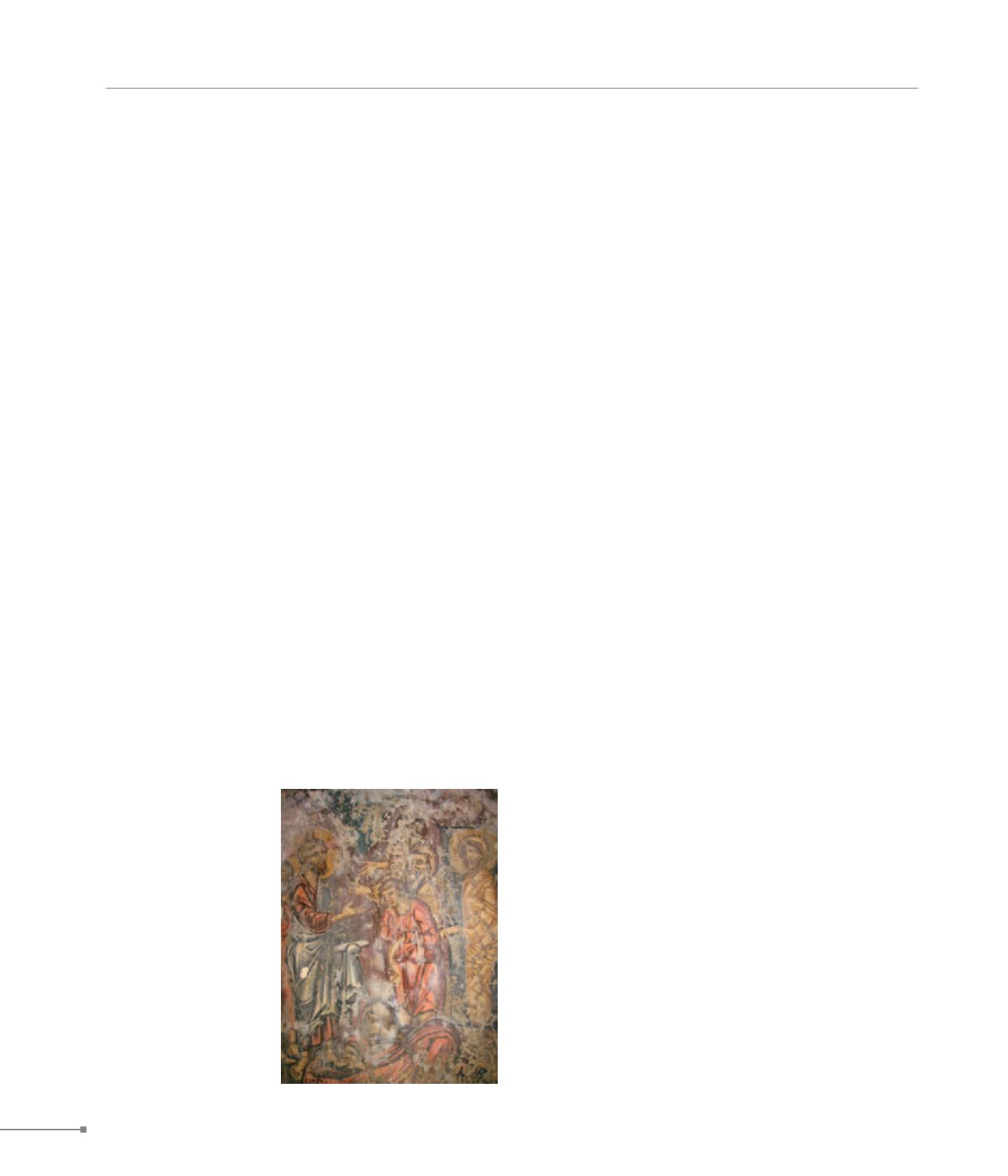
Apano Symi.
Bizariano. Lyktos.
CRETE
280
482. Sgourokephali, Saint
Nicholas, wall painting
(Σγουροκεφάλι, Άγιος
Νικόλαος, τοιχογραφία)
iconographical standards. The tradition of this type of art is
reinforced by other painters who, in the first half of the 15th c.,
had emigrated from Constantinople to Crete, an island then
favoured by historical circumstances. They managed to en-
hance the provincial style of the local artists and contributed
to the formation of the Cretan School of Art.
480.
Apano Symi.
The naiskos of Saint George is single-nave with an added tran-
sept. Both its sections are covered with pointed barrel vaults.
The dedicatory inscription on the base of the E section of the
narthex’s barrel vault, mentions the painter Manuel Phokas and
the date of the wall-paintings, October 1453, the year of the fall
of Constantinople. Phokas is classified among the main repre-
sentatives of the Constantinopolitan art tradition and an imme-
diate precursor of the Cretan School of the 16th c.
481.
Sampas.
In the church of Saint Nicholas are numerous depictions of
the evangelical cycle and the life of Saint George. There is
an interesting painting of Saint Francis of Assisi receiving the
Stigmata, displaying Western influences.
482.
Sgourokefali.
The church of Saint Nicholas has evangelical scenes on the
barrel vault from the second half of the 14th c.
483. Episkopi.
A good number of decorated churches survive in Episkopi. In
the barrel vault of Aghia Paraskevi is preserved the extensive
cycle of the life of Aghia Paraksevi, without evangelical scenes
and featuring numerous Western influences. The church of
Archangel Michael presents evangelical scenes of the mid-
14th c. in the barrel vault. Remains of exquisite frescoes, rep-
resentative examples of Constantinopolitan art of the late 14th
c., are in the church of Saint Anthony. Kera Limiotissa is a
single-nave church with a dome dating from the 10th c. Frag-
ments of wall-paintings from the 10th, 13th and late 14th c.
– the latter in the conch with the Theotokos among Angels.
Saint George at Toupaki features wall-paintings of the Con-
stantinopolitan tradition associated with the Phokas’ art.
484.
Galyfa
.
The naiskos of Aghia Paraskevi is barrel-vaulted and single-
nave, with the later addition of a transept. The painting of the
original church, of the early 13th c., continues the tradition
of monumental Comnenian art. Of interest is a depiction of
a dedicator offering a church, next to the Virgin Mary in the
conch. The transept features numerous pictures associated
with wall-paintings, dating from the eighth and ninth decade
of the 14th c.
485.
Bizariano. Lyktos.
The ancient city of Lyctus prospered in the Early Christian
years. It is mentioned as a see in the 8th c. Beneath the Timi-
os Stavros church (Holy Cross) survives a mosaic floor of a
basilica of the 5th c. Possibly, a second basilica lies beneath
the church of Saint George. In the church of Aghios Pantelei-
mon at Bizariano (11th c.) architectural components from
Early Christian basilicas in Lyktos have been embedded. The
citadel, at an altitude of 600 m, dates from the 7th-9th c.; it


